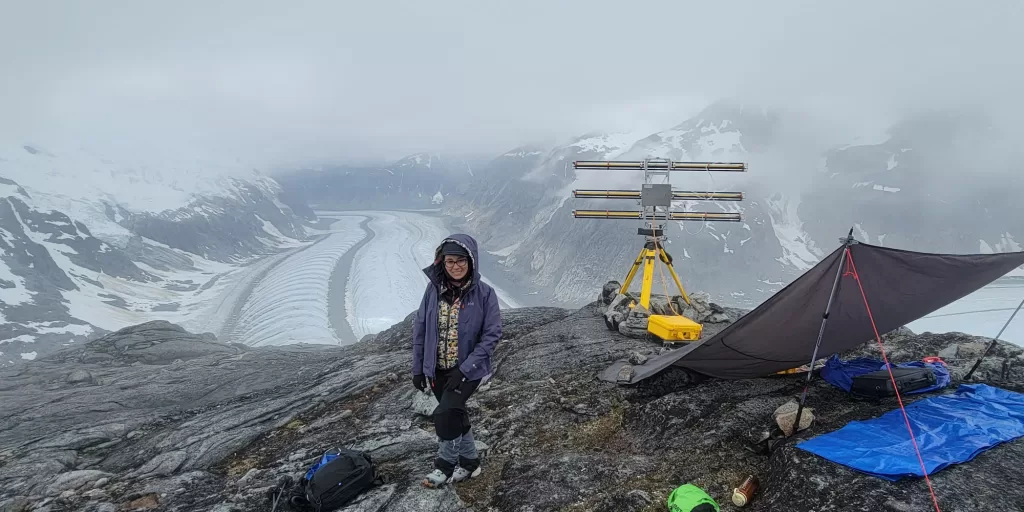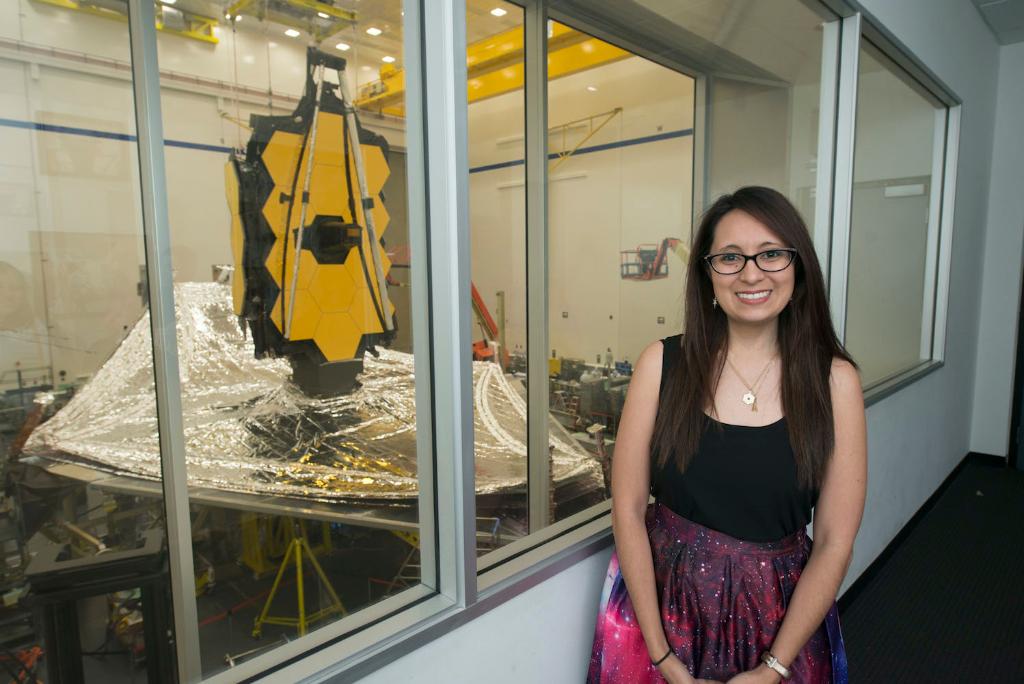Many kids dream of becoming astronauts and going to space, moved by their fascination for what’s out there. While most won’t actually go on to pursue a career in astronomy, Krystal Puga remained true to her childhood dream of studying space. Now, a Space Segment Systems Engineer at Northrop Grumman, she has contributed to the James Webb Space Telescope and is currently researching the viability of living on the moon.
“I was the kid that had those glow-in-the-dark star stickers on the wall. I don’t have them installed anymore, but I’m like, maybe someday I’ll give these to somebody and say, ‘Hey, these, these really inspired me to become an engineer and to get into space,” Puga told LATINA.
Puga’s journey in engineering began in 7th grade when she participated in Science Olympiad’s Mission Possible. She and her friend formed the first all-girls team to compete at her school and in the region of Central Valley, California. Despite facing initial skepticism, they worked diligently and beat the boys’ team to represent their school at the regional competition, eventually winning and securing third place in the state. “It was really amazing to be in seventh grade and get to feel like, ‘Heyy, I can do this. I can become an engineer. This is what I wanna do for the rest of my life,’” Puga said.

Puga and a classmate, 7th grade Goldberg Engineering Project
Her father, an immigrant from Mexico without a high school degree, played a pivotal role in nurturing her dreams and encouraging her career in STEM. Despite their financial limitations, he supported her emotionally and arranged for an engineer from his company to mentor her. She was admitted to Embry-Riddle Aeronautical University in Florida, known for its strong aerospace curriculum — a dream achievement that came with multiple challenges. She remembers clearly how her father drove her cross-country in an 18-wheeler truck to her college campus because they couldn’t afford to fly there.
“We got to my campus an hour before orientation started and then we had to find a place to park his giant truck. That was that moment when I realized, I was really out of my element because we were very poor and my dad was so uncomfortable in this setting with all these professionals and children that come from money,” Puga said with a shaky voice and tears in her eyes. “He reminds me of that story all the time because he is like, ‘Look at how far, you know, we’ve come where we didn’t even have money to take you to school.’”

Krystal Puga, Juneau Icefield Research Program
After graduation, Puga joined Northrop Grumman, a multinational aerospace and defense technology company, which allowed her to work on the James Webb Space Telescope. As hardware manager for deployment mechanisms, she ensured that all components met rigorous standards of quality and oversaw their installation. Puga later transitioned into a role focused on logistics and launch criteria, which culminated in witnessing the telescope’s launch. “I spent 10 years on that program, so it was, it really is kind of a defining moment for me in my career,” she said.
In her current position as a mission architect, Puga supports human exploration missions, with a focus on habitat design for future lunar and Martian missions. She collaborates with teams to envision living arrangements for astronauts, considering essential elements such as sleeping quarters and logistical requirements, contributing to the Artemis missions which aims to take humans back to the moon by 2024. “I was inspired by the Apollo, seeing the very first time that an astronaut walked on the moon. So, Artemis is really gonna be the next program that not only I’m getting to work a little bit of that now, but it’s really gonna inspire the next generation of scientists and engineers,” she said.
Beyond her research work, Puga is committed to making STEM more accessible to the Latino immigrant community by sharing about her work in Spanish whenever she can and improving science communication. “One of the things I’ve actually struggled with is being able to communicate with the Hispanic population all the great things that we do. Webb is very well known in the English speaking community, but in the Spanish speaking community, they don’t hear enough about it,” she said. “I try to tell all my family members and try to explain to them in Spanish what it is but it’s hard sometimes because the words just don’t translate right. We need more advocates to help share science.”
Alejandra Arevalo is a Peruvian multimedia journalist based in New York covering the music industry at Chartmetric.









